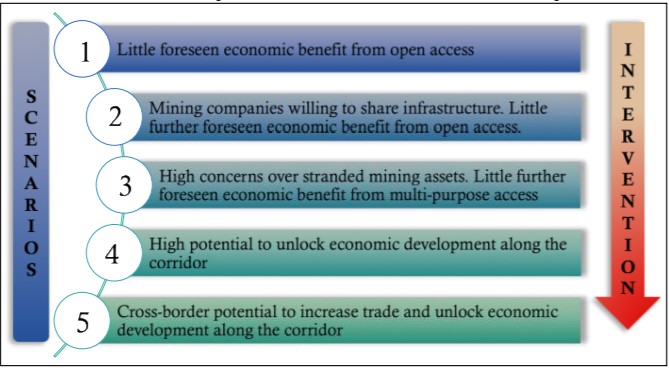- Home
- Topics
- Shared Use of Extractive Infrastructure and Resource Corridors
- Sharing Transport (Roads, Ports, Railways)
- Framework for Implementation
Framework for Implementation
At a Glance
-
While road infrastructure is commonly open access, and therefore its shared use is unlikely to be challenged by investors, costlier strategic infrastructure investments, such as railways, require a more nuanced assessment and a more complex framework for implementation.
-
A detailed cost-benefit analysis will reveal the degree to which a government might want to intervene to ensure that transport infrastructure is shared.
Key Resources
- A Framework to Approach Shared Use of Mining-Related Infrastructure (Nicolas Maennling, Alpa Shah, Sophie Thomashausen, Perrine Toledano)
- Fostering the Development of Greenfield Mining-Related Transport Infrastructure through Project Financing (International Finance Corporation)
- Breaking out of Enclaves Leveraging Opportunities from Regional Integration in Africa to Promote Resource-Driven Diversification (Gozde Isik, Kennedy Opalo, Perrine Toledano)
- Leveraging Extractive Industry Infrastructure Investments for Broad Economic Development: Regulatory, Commercial and Operational Models for Railways and Ports (Perrine Toledano)
- Cross-Border Oil and Gas Pipelines: Problems and Prospects (World Bank, United Nations Development Programme)
Topic Briefing
The level of government intervention required in a plan to share transport infrastructure will depend on the infrastructure in question and its strategic importance to the national economy. Road infrastructure is commonly open access and therefore unlikely to be challenged by the investor. However, for costlier and strategic infrastructure investments such as railways, a more nuanced assessment is necessary and the framework for implementation will necessarily be more complex.

